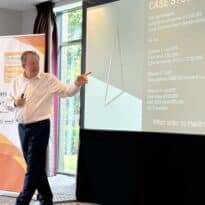Fiona Hanrahan, senior intermediary development and technical manager, Royal London, provides answers to the most commonly asked questions received by the technical team as we head towards tax year end.
It won’t be a surprise to hear that January to April is normally a busy time for us, but this year has been even busier due to the changes to pensions announced in the March 2023 Budget. So, we thought it would be useful to share the most common questions we’ve been asked about pensions recently.
How does the increase in the annual allowance from £40,000 to £60,000 affect carry forward calculations?
The increase does not affect any year in your calculation before 6 April 2023. The maximum starting point, therefore, before deducting any contributions paid or allowing for any reduction due to the taper, would be £180,000. This is 3 times £40,000 plus £60,000.
How does the change in the tapered annual allowance rules affect any carry forward calculations?
The changes to the taper parameters will only affect the 2023/24 tax year in your calculation. So, if you are looking at a carry forward calculation where the taper applies in a year prior to 2023/24, then you will use the taper rules which applied in that earlier year to those years.
Can clients with fixed protection who have been able to pay contributions since 6 April 2023, without losing the protection, make use of carry forward?
Most likely yes. They will meet the eligibility rules for carry forward if they are a paid up or deferred member of a pension scheme. As they are now able to pay in again, in theory these clients have unused annual allowance of £180,000 in 2023/24. This assumes they are not impacted by the tapered annual allowance or MPAA and importantly have the earnings to support a contribution this year if it’s an individual contribution they are making.
Can I use carry forward if I’ve triggered the MPAA?
You can’t use carry forward to increase contributions to money purchase schemes above the now £10,000 limit, if you’ve triggered the MPAA. You do though still have up to the remainder of the standard AA of £60,000 available to use for your defined benefit schemes.
Towards the tax year end then, it’s important to make sure your clients use the MPAA, as any unused MPAA can’t be used in a future year.
My client has inherited £100,000 and wants to pay this into their pension. Can this be done? They earn £50,000.
Tax relief on an individual contribution is limited to 100% of earnings. So, the maximum contribution for this client will likely be £50,000 less any contributions they have already paid this tax year. Most providers will only accept individual contributions which are entitled to tax relief. Options would be to stagger the contribution over more than one tax year or perhaps make the payment to the spouse’s pension as a third-party contribution if they have earnings to support it.
These are a few of the questions we’ve been asked recently about tax year end and how the Spring Budget 2023 changes affect tax year end planning for 2023/24. For more help, please have a look at our tax year end hub.





























